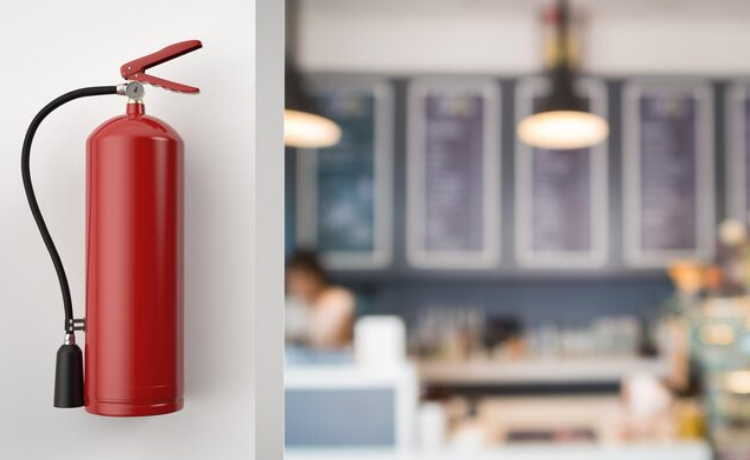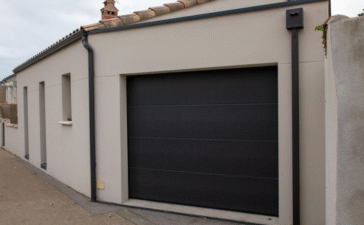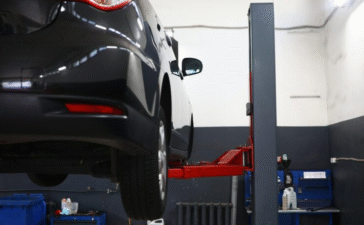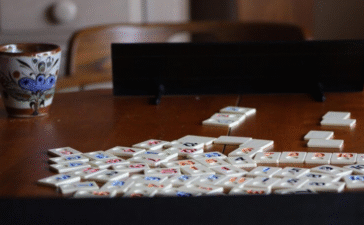The kitchen is often called the heart of the home, a place of warmth and nourishment. However, it’s also where the risk of a fire is highest. Cooking accidents are a primary cause of home fires, with unattended cooking being the leading contributor. A simple kitchen mishap, like a grease fire, can escalate into a dangerous situation in seconds.Being prepared for such an emergency is not just a suggestion; it’s a critical component of home safety. This guide will walk you through everything you need to know about kitchen fire extinguishers. We will cover the specific fire risks in a kitchen, how to select the right extinguisher for your needs, proper usage techniques, and essential maintenance practices. By the end, you’ll have the knowledge to protect your home and loved ones from kitchen fire hazards.
Why Your Kitchen Needs a Fire Extinguisher
Fire safety in the kitchen is a responsibility every household should take seriously. According to the National Fire Protection Association (NFPA), cooking is the leading cause of reported home fires and home fire injuries. Between 2017 and 2021, U.S. fire departments responded to an average of 167,100 home fires per year that involved cooking equipment. These fires can spread with alarming speed, turning a small flame into a major disaster before help can arrive. Having the right tools on hand, like a fire extinguisher, provides the first line of defense to prevent kitchen fires from becoming uncontrollable.
The Common Hazards of Kitchen Fires
Kitchens present a unique mix of fire hazards. Understanding the different types of fires that can occur is the first step toward effective prevention and response.
Grease fires are among the most common and dangerous. They happen when cooking oils or fats become too hot and ignite. Attempting to extinguish a grease fire with water can have catastrophic results, as it causes the burning grease to splash and spread the fire rapidly.
Electrical fires are another significant risk, stemming from faulty wiring in appliances like toasters, microwaves, or refrigerators. Overloaded circuits or damaged cords can spark a fire, which requires a specific type of extinguishing agent that does not conduct electricity. Recognizing these distinct fire hazards is crucial for ensuring your home fire safety plan is adequate.
Types of kitchen fire extinguisher
Not all fire extinguishers are created equal, and using the wrong type on a kitchen fire can make the situation worse. The classes of fire extinguishers are designated by letters, corresponding to the types of fuel they are designed to fight.
Class K Fire Extinguishers
For commercial kitchens, a Class K fire extinguisher is mandatory, and it’s an excellent choice for home kitchens as well. These extinguishers are specifically designed to combat fires involving cooking media like vegetable oils, animal fats, and grease. They use a wet chemical agent that reacts with the burning oil to form a soapy, foam-like barrier, a process called saponification. This barrier not only smothers the fire but also helps to cool the hot oil and prevent re-ignition. If you do a lot of frying or cooking with oils, a Class K extinguisher is the safest and most effective option for a grease fire.
Class ABC Fire Extinguishers
A multi-purpose Class ABC fire extinguisher is another common and suitable choice for residential kitchens. This all-purpose extinguisher can handle the three most common types of home fires: Class A (ordinary combustibles like wood, paper, and cloth), Class B (flammable liquids like gasoline and oil), and Class C (energized electrical equipment). Its versatility makes it a practical addition to your home fire safety arsenal. While not as specialized for cooking oil fires as a Class K unit, a dry chemical ABC extinguisher can effectively manage small grease fires and is invaluable for tackling electrical fires from kitchen appliances.
Extinguishers to Avoid in the Kitchen
It is critical to know which extinguishers to avoid. Never use a water-based fire extinguisher (Class A) on a grease or electrical fire. For grease fires, the water will cause the burning oil to splatter violently, spreading the flames. For electrical fires, water conducts electricity, creating a severe shock hazard. Always check the label of an extinguisher to ensure it is rated for the types of fires you might face in your kitchen.
How to Choose the Right Kitchen Fire Extinguisher
Selecting the right fire safety equipment for your kitchen involves considering your specific cooking habits and environment.
Choosing Based on Fire Types
Your first step is to assess the most likely fire hazards in your kitchen. If your cooking involves frequent deep-frying or extensive use of oils, a Class K extinguisher is a wise investment. For general-purpose protection against a wider range of potential fires, including those from electrical appliances or common combustibles, a Class ABC multi-purpose extinguisher is a reliable choice. Many homeowners opt to have both: a smaller ABC unit for general use and a dedicated kitchen extinguisher for cooking-related fires.
Size and Capacity Considerations
Fire extinguishers come in various sizes, typically indicated by weight. For home kitchen use, a 2.5-pound to 5-pound model is generally sufficient. A smaller unit is lighter and easier for all household members to handle, but it will have a shorter discharge time. A larger unit offers more extinguishing agent but can be heavier. Consider the size of your kitchen and choose a fire extinguisher size that is manageable for you and offers enough capacity to handle a small, incipient-stage fire.
Brand and Quality
When purchasing a fire extinguisher, invest in a trusted brand known for reliability and quality. Look for extinguishers that are UL (Underwriters Laboratories) certified, which indicates they have been tested and meet stringent safety standards. Reputable brands like Kidde, First Alert, and Amerex are widely available and offer quality fire extinguishers designed for residential use. An easy-to-read pressure gauge and clear instructions are also important features that contribute to the extinguisher’s reliability and ease of use.
How to Use a Kitchen Fire Extinguisher
In the event of a fire, knowing how to operate your extinguisher correctly is vital. Most fire extinguishers use the PASS method.
Step-by-Step Instructions: The PASS Method
Remembering the acronym PASS can help you act quickly and effectively in an emergency:
- Pull: Pull the pin at the top of the extinguisher. This pin prevents accidental discharge.
- Aim: Aim the nozzle at the base of the fire, not the flames themselves. Hitting the fuel source is key to extinguishing the fire.
- Squeeze: Squeeze the lever slowly and evenly to release the extinguishing agent.
- Sweep: Sweep the nozzle from side to side across the base of the fire until it is completely out.
For a grease fire, turn off the heat source immediately if it is safe to do so. For an electrical fire, unplug the appliance if possible. After using the extinguisher, watch the area carefully to ensure the fire does not re-ignite.
Safety Tips for Using an Extinguisher
Your safety is the priority. Always keep a clear exit path behind you when fighting a fire. If the fire is large, spreading quickly, or if the room is filling with smoke, do not attempt to fight it. Evacuate immediately, close the door behind you to contain the fire, and call 911 from a safe location. Do not turn your back on a fire that you believe is out, as it can flare up again.
Maintaining Your Kitchen Fire Extinguisher
A fire extinguisher is only effective if it is properly maintained and ready for use. Regular inspection is a simple but critical task.
How to Maintain and Inspect Your Extinguisher
At least once a month, perform a quick visual inspection. Check that the pressure gauge is in the green “charged” zone. Ensure the pin and tamper seal are intact. Examine the nozzle and hose for any cracks, tears, or blockages. Make sure the extinguisher is clean and its label and instructions are legible. If you notice any issues, such as a low pressure reading or visible damage, the extinguisher needs to be serviced or replaced.
Expiration and Lifespan
Fire extinguishers do not last forever. Disposable extinguishers, common in homes, typically have a lifespan of 10 to 12 years from the date of manufacture, which is printed on the label. Rechargeable extinguishers should be professionally serviced every six years and hydrostatically tested every 12 years. Mark the purchase date on your extinguisher and set a calendar reminder to replace it before it expires to ensure your kitchen fire preparedness is never compromised.
Other Kitchen Fire Safety Measures
A fire extinguisher is just one part of a comprehensive kitchen fire safety plan.
Fire Blankets and Sprinklers
A fire blanket is another useful tool for smothering small cooking fires, especially on a stovetop. It is made of fire-resistant material and works by cutting off the oxygen supply to the fire. For enhanced protection, residential fire sprinkler systems can automatically detect and suppress fires, providing an immediate response even when you are not home.
Preventive Measures to Avoid Fires
The best way to handle a kitchen fire is to prevent it from starting. Always stay in the kitchen when you are frying, grilling, or broiling food. Keep flammable items like oven mitts, wooden utensils, and paper towels away from the stovetop. Clean cooking surfaces regularly to prevent grease buildup. Finally, be cautious with electrical appliances and avoid overloading outlets. These simple, safe cooking practices can significantly reduce your risk of a kitchen fire.
Also check: “mud kitchen“
Your Action Plan for Kitchen Safety
Protecting your home starts with being proactive. Having the right kitchen fire extinguisher and knowing how to use it are essential components of home fire protection. By understanding the risks, choosing the appropriate equipment, and performing regular maintenance, you empower yourself to handle an emergency effectively. Take the time today to assess your kitchen’s fire safety. Ensure you have a suitable, accessible, and fully charged fire extinguisher. This simple step can make all the difference in safeguarding your home and family. You can find quality fire extinguishers at most home improvement stores, department stores, and online retailers.
Frequently Asked Questions
What is the best type of kitchen fire extinguisher?
For home kitchens, a multi-purpose ABC fire extinguisher is a versatile and effective choice, as it can handle common fires involving wood, paper, flammable liquids, and electrical equipment. For households that do a lot of cooking with oils and fats, a Class K extinguisher is the ideal choice for its ability to safely and effectively put out grease fires.
Where should I store my fire extinguisher in the kitchen?
Store your fire extinguisher in an accessible location near an exit, but not too close to the stove or other potential fire sources where it could be blocked by flames. A good spot is mounted on a wall near a doorway or inside a pantry cabinet. Everyone in the household should know its location.
Can I use a fire extinguisher more than once?
Disposable fire extinguishers are designed for one-time use. Even if you only discharge a small amount, the pressure will leak out over time, rendering it ineffective. After any use, a disposable extinguisher must be replaced. Rechargeable models must be professionally serviced and refilled after each use.
How do I dispose of an old fire extinguisher?
Do not simply throw an old fire extinguisher in the trash, as it may still be pressurized. Contact your local fire department or a hazardous waste disposal facility for instructions on how to properly dispose of or recycle it. Some fire extinguisher service companies may also accept old units.
What should I do if a grease fire starts in my oven?
If a fire starts inside your oven, keep the oven door closed to starve the fire of oxygen. Turn off the oven and allow the fire to burn itself out. If the fire does not go out or if you see flames escaping the oven, evacuate the house and call 911. Do not open the oven door, as the rush of oxygen could cause the fire to flare up.











